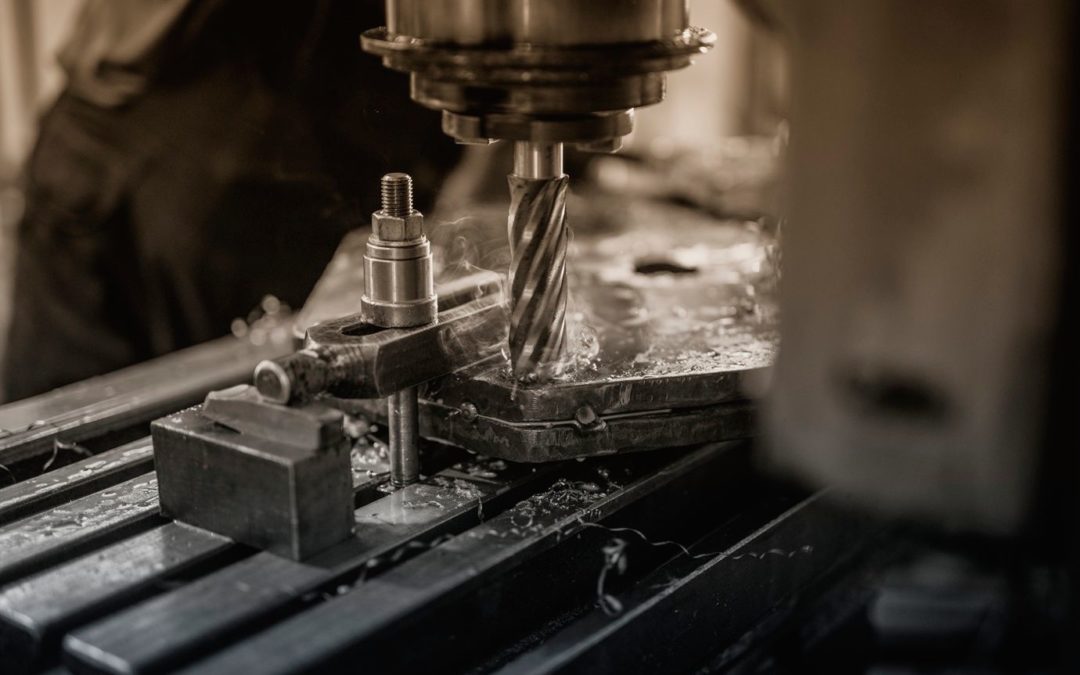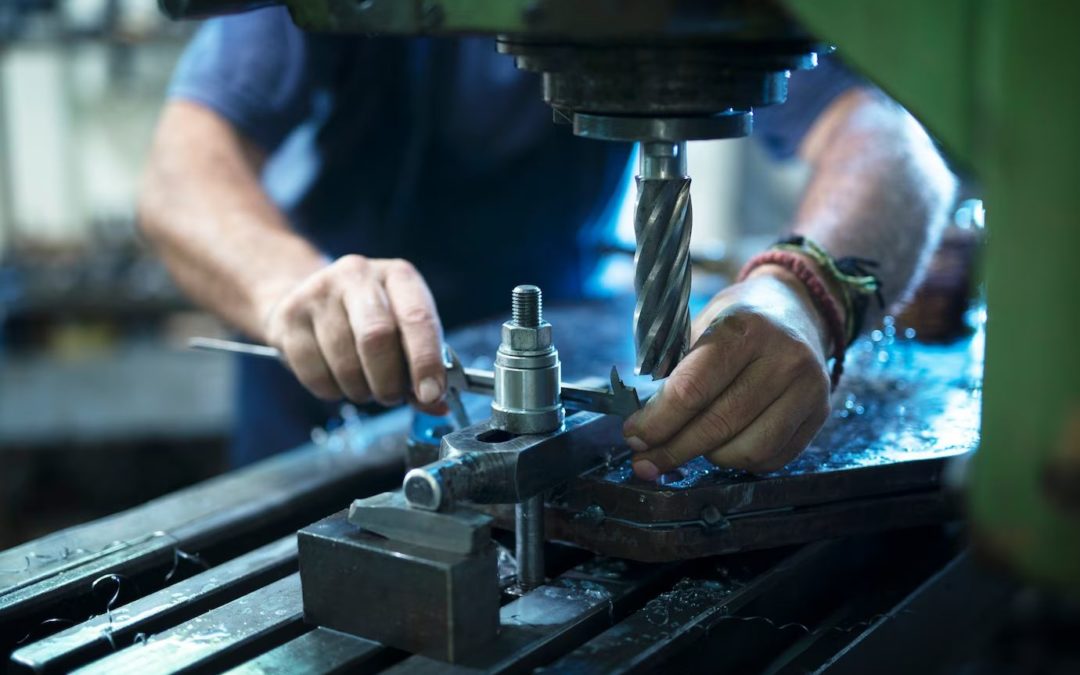In today’s fast-paced manufacturing world, the need for precision, efficiency, and flexibility is more important than ever. There are reasons to partner with a custom machine shop that offers advantages for startups prototyping products or established companies improving production processes.
At MDA, we understand the unique demands of modern manufacturing and are dedicated to providing top-notch CNC machining services that can help your business thrive.
In this blog, we’ll explore the top 10 reasons why teaming up with a custom machine shop like MDA is a smart move for your manufacturing needs. Discover how our expertise, cost savings, and cutting-edge technology can elevate your production capabilities and drive success.
Reason 1: Expertise and Experience
Custom machine shops, like MDA, boast a wealth of specialized skills and knowledge essential for handling intricate machining projects. Our experienced machinists have honed their craft over years of working with diverse materials and complex designs, mastering the nuances of CNC machining. By partnering with us, you gain access to this expertise, ensuring that your projects are executed with precision and efficiency. Our seasoned professionals understand the intricacies of machining processes, allowing them to anticipate and overcome challenges seamlessly. Our experienced machinists offer insights to optimize designs, enhancing manufacturability and delivering superior project outcomes.
Reason 2: Access to Advanced Technology
Custom machine shops, such as MDA, are equipped with cutting-edge machinery and tools that leverage the latest advancements in technology. Our state-of-the-art equipment includes high-precision CNC machines, advanced CAD/CAM software, and automated systems, allowing us to achieve unparalleled levels of product quality and precision. With access to such advanced technology, we can execute even the most complex machining tasks with ease and accuracy. This results in products that meet the highest standards of quality and consistency, giving you peace of mind that your projects are in capable hands. Advanced technology streamlines production, reduces lead times, and enhances efficiency, providing cost-effective solutions to our clients. By partnering with MDA, you gain access to this cutting-edge technology, ensuring that your projects are executed with the utmost precision and efficiency.
Reason 3: Cost-Effectiveness
Partnering with a custom machine shop like MDA offers significant cost savings through reduced waste and efficient processes. Our streamlined manufacturing workflows and precision machining capabilities minimize material waste, ensuring optimal utilization of resources and reducing production costs. Additionally, our expertise in CNC machining allows us to optimize processes for efficiency, resulting in shorter lead times and lower overhead expenses.
When comparing the costs of outsourcing to a custom machine shop versus in-house manufacturing, the advantages become apparent. In-house manufacturing often entails high initial investments in machinery, tooling, and skilled labor, along with ongoing maintenance and operational costs. By outsourcing to MDA, you eliminate these upfront expenses and overhead costs, allowing you to allocate resources more effectively and focus on core business activities. Our transparent pricing and cost-effectiveness guarantee high-quality machining services at competitive rates, maximizing your return on investment.
Reason 4: Flexibility in Production
Partnering with MDA provides unparalleled flexibility in production, catering to both small batches and custom orders with ease. Our custom machine shop is equipped to handle a wide range of production volumes, from small-scale runs to larger quantities, ensuring that we can meet your specific needs regardless of project size. This flexibility extends to our ability to accommodate design changes and modifications swiftly. Our CNC machining expertise and advanced technology allow for seamless adaptation to evolving requirements, ensuring quality and efficiency. For prototyping or modifying designs, trust MDA for flexible production solutions tailored to your exact specifications.
Reason 5: High-Quality Standards
Maintaining rigorous quality control is paramount in custom machine shops like MDA, ensuring that every product meets the highest standards of excellence. Our commitment to quality assurance begins with thorough inspection and testing protocols implemented throughout the manufacturing process. From initial material selection to final product inspection, we adhere to strict quality control measures to guarantee superior outcomes.
We monitor every production step to promptly identify and fix deviations, ensuring the final product remains uncompromised. Our dedication to quality extends beyond meeting industry standards; it is ingrained in our culture and reflected in the precision and reliability of our machined components. Partnering with MDA means entrusting your projects to a custom machine shop that prioritizes quality at every stage of production. With our unwavering commitment to excellence, you can have confidence in the superior outcomes we deliver.
Also Read: A Complete Guide to Working with a Custom Machine Shop
Reason 6: Faster Turnaround Times
At MDA, we pride ourselves on our ability to deliver fast turnaround times, thanks to our streamlined processes and quick production capabilities. By leveraging advanced technology and optimizing our workflows, we can expedite the manufacturing process without compromising on quality. Our efficient production methods allow us to meet tight deadlines and respond swiftly to changing market demands.
One of the key benefits of our rapid turnaround times is the ability to offer rapid prototyping services. With our agile manufacturing capabilities, we can quickly translate design concepts into physical prototypes for testing and validation. This enables our clients to iterate on their designs rapidly, accelerating the product development cycle and reducing time-to-market.
Our fast turnaround times enable quick market entry, helping businesses capitalize on opportunities and stay ahead of the competition. Whether you need to launch a new product or fulfill urgent orders, you can rely on MDA to deliver quality machined components with speed and efficiency.
Reason 7: Customized Solutions
At MDA, we specialize in providing tailored manufacturing solutions to meet the specific needs of various industries. Our custom machining capabilities enable us to produce precision components and parts that are customized to our clients’ exact specifications. Whether you require complex geometries, tight tolerances, or unique materials, we have the expertise and technology to deliver.
Numerous industries benefit from our custom machining services, including aerospace, medical devices, automotive, electronics, and more. In the aerospace industry, for example, our precision machining ensures the reliability and performance of critical components used in aircraft and spacecraft. Similarly, in the medical device sector, our customized solutions enable the production of intricate and sterile components for surgical instruments, implants, and diagnostic equipment.
By partnering with MDA, businesses across various sectors can access customized manufacturing solutions that address their unique challenges and requirements. Our commitment to quality, precision, and innovation ensures that our clients receive superior products that meet their specific industry needs.
Reason 8: Enhanced Scalability
CNC milling offers remarkable scalability, making it suitable for various production volumes, from small batches to large-scale manufacturing. This flexibility allows businesses to efficiently manage production runs of different sizes without compromising on quality or precision.
For small-scale manufacturing, CNC milling is cost-effective and efficient, enabling the production of limited quantities of high-quality parts without extensive tooling or setup changes. This is ideal for startups, custom orders, and niche markets where precision and customization are critical.
CNC milling excels in large-scale manufacturing, allowing machines to run continuously for high output rates and consistent quality. This is ideal for industries like automotive, aerospace, and electronics, which require large volumes of precision components.
At MDA, we use advanced CNC milling to support both small-scale and large-scale production. Our state-of-the-art machinery and experienced team can efficiently scale production, delivering high-quality parts regardless of volume. Whether you need prototypes or mass production, MDA ensures precision, reliability, and efficiency in your manufacturing processes.
Reason 9: Reduced Risk
Partnering with a custom machine shop like MDA significantly reduces the risks associated with in-house production errors. In-house machining can face equipment issues, skill gaps, and human error, leading to costly mistakes and production delays.
By outsourcing to MDA, you benefit from the expertise and reliability of professional machinists who have honed their skills over years of experience. Our team ensures that each part is machined with precision and consistency, adhering to strict quality control standards. This reduces the likelihood of errors and defects, providing you with reliable and high-quality components.
Additionally, our advanced CNC technology and streamlined processes further enhance reliability and minimize risks. With MDA, you can trust that your production runs will be handled with the utmost care and accuracy, mitigating the risks of in-house production and ensuring superior outcomes for your projects.
Reason 10: Innovation and Continuous Improvement
Custom machine shops like MDA play a crucial role in driving product innovation. Our expertise and access to advanced technology enable us to collaborate closely with clients to develop cutting-edge solutions and improve existing products. Leveraging our knowledge and advanced machinery, we turn innovative ideas into reality with precision and customization for groundbreaking designs.
Furthermore, MDA is committed to staying updated with the latest manufacturing trends and techniques. We continuously invest in new technologies, tools, and training to ensure we remain at the forefront of the industry. This dedication to continuous improvement allows us to offer the most efficient, accurate, and high-quality machining services available.
Our proactive innovation adapts to market changes, ensuring we deliver the best solutions for our clients’ manufacturing needs. Partnering with MDA gives you a forward-thinking ally that meets your needs and keeps you ahead through ongoing innovation.
Conclusion
Partnering with a custom machine shop provides expertise, advanced technology, cost-effectiveness, and scalability for your business. Custom machine shops provide high-quality, precise, and reliable machining services that cater to diverse industry needs. The flexibility in production, rigorous quality control, and commitment to innovation further enhance the value of these partnerships.
At MDA, we exemplify the advantages of working with a custom machine shop. Our experienced team, state-of-the-art equipment, and dedication to quality and efficiency make us the ideal choice for your CNC machining needs. Whether you’re looking for small-batch custom parts or large-scale production runs, MDA delivers consistent excellence, innovative solutions, and unparalleled support.
Choose MDA as your CNC machine shop partner and experience the benefits of expertise, advanced technology, cost savings, and a commitment to your success. Moreover, with MDA, you can be confident that your projects will be handled with precision, reliability, and a forward-thinking approach that keeps you ahead in your industry.





